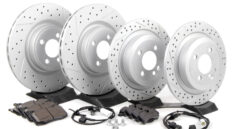Tired of having your bank account bullied by excessive auto insurance premiums in BC? While it’s easy to blame the game, it turns out that there could be something wrong with your uppercut. There are moves that you’re making, or not making, in the ring that could be hiking your rates higher than they need to be. With some basic adjustments, you can TKO unnecessary increases. Below is a breakdown of those moves. Let’s take a jab and see if you end up paying less at this same time next year.
How to TKO Auto Insurance Premiums in BC with Some Practical Adjustments:
Make Your Payments on Time, Every Time
Insurance companies are like creditors. They don’t like missed or late payments. Technically, most insurers allow two, but even one doesn’t reflect kindly on your status. Canadian Underwriter reports that there can be a premium hike as high as 36% in the lowest quoted premium due to cancellation for non-payment. Moreover, some insurers refuse to take on clients with non-payments on their records (non-payment stays on the client record for 3-years). This reduces your options for future renewals or purchases. From this moment forward, pledge to make payment early or on time.
Throw Zero Omissions
We’re not talking about insurance risks associated with your zero-emissions electric vehicle. Instead, we’re referencing zero omissions. Omissions can lead to the cancellation of your existing policy and an increase in future premiums. For example, if you intentionally or unintentionally leave out important information about who drives your car and/or what it’s used for (especially if for Uber/Lyft) and it comes to light after an accident or other incident, you could void your policy and face a subsequent hike in the quoted premium with another insurer. Further, if you or a primary operator of the vehicle has moved into a new ICBC Territory Class, the same may occur.
Leave nothing out when informing your insurer about your vehicle and its drivers. Here’s everything you need to know about updating your auto insurance provider.
Drive with the Right Tires
In October of 2021, winter tires became mandatory on many B.C. highways. If you haven’t experienced a winter season on the road since then, you may not know this. If you are found driving without winter tires in said regions, you could void your policy and experience a rate hike upon renewal. However, even if live in a region where winter tires are not mandatory, you will miss a discount if you use them but neglect to tell your insurer. In either scenario, you pay higher premiums than you need to.
Here is what you need to know about legal winter tires in British Columbia.
A legal winter tire (on a standard passenger vehicle or a four-wheel/all-wheel vehicle) MUST have at least 3.5 mm of tread depth. A winter tire must also be labelled with either of the following:
- The letters “M” and “S”, is the minimum legal requirement (mud + snow/all-season tires)
- The 3-peaked mountain/snowflake symbol (some manufacturers label with both the mountain snowflake and the M+S symbol)
- 3-peaked mountain/snowflake tires (which include all-weather tires) offer better traction on snow and ice. We recommend drivers install 3-peaked mountain/snowflake tires for cold weather driving and, for extreme conditions, carry chains.
Other Winter Driving Tips
Winter driving in cold, snowy climates can be risky. Be prepared. Here are 5 tips to keep your safe.
- Ensure your vehicle is ready for winter in the fall
- Pack an emergency kit
- Plan your trip: check road and weather conditions
- Travel with a fully charged phone
- Slow down and wear your seatbelt
Bundle-Up Baby!
If you’re not bundling your insurance (home, home business, and/or auto, etc.) you could be paying higher premiums than you need to. Recent research found that drivers could receive up to a 10 percent decrease in the annual quoted rates if they bundled their auto insurance with other policies.
Every motorist who resides in B.C. is legally required to purchase the Basic Autoplan package from ICBC through a licensed Autoplan broker such as Park Insurance. However, most motorists buy extra coverage for their vehicles, themselves, and equipment they’ve added to their vehicles, to cover risks that are not covered under the mandatory Basic Autoplan.
To find out if you can save on auto insurance, simply contact your independent broker. Your broker will perform a comprehensive review of your existing policies to find out if you can save.
Even, better, when you buy your private auto insurance and combine it with your home insurance, you can end up saving even more money!





